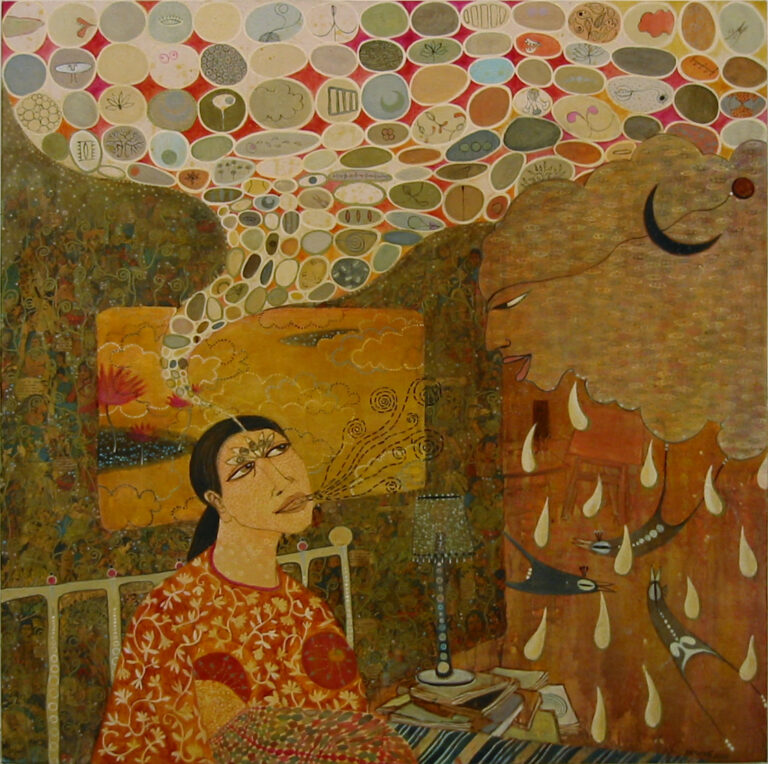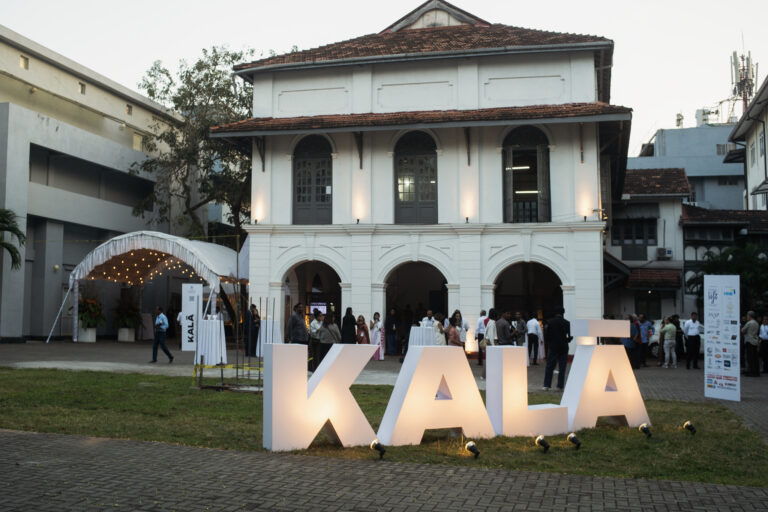Pheroza Godrej (née Shroff) has been a key figure in the arts and culture scene since the early 1970s, the period during which she established Cymroza Art Gallery in Mumbai. Beyond her role as a gallerist, Dr. Godrej has taken on the role of author, collector, donor and mentor. Her wide range of interests has allowed her to bring focus and attention to a dizzying variety of artists and producers who have benefited from her support.
Trained as a painter, and as a student of English literature, her entry into the gallery world was shaped by her experience of India’s cultural scene during the 1960s. In the visual arts, this meant attending exhibitions organised by entities such as the Bombay Arts Society, Arts Society of India and the Sir J J School of Art. The Colaba area had also witnessed the establishment of commercial galleries Chemould and Pundoles, adding to the incumbent rental exhibition spaces of Jehangir Art Gallery, Chetna, Artists Centre and the Taj Art Gallery.

(From left) Phiroze Shroff, Pheroza P Godrej (née Shroff), Cyrus Shroff and Mitha Shroff before a painting by B Prabha, Cymroza Gallery, 1971. Image Courtesy: Cymroza Gallery.
Further south, on Warden Road, the Bhulabhai Memorial Institute had played host since the 1950s to a variety of practitioners from across the arts. Arguably the city’s first commercial gallery, Gallery 59, was established there by Bal Chabbda (named after the year in which it was founded). Artists who had studios at the Institute included V.S. Gaitonde, Nasreen Mohamedi, Tyeb Mehta, Dashrath Patel, and even the young Nalini Malani. From the world of the dramatic arts, Ebrahim Alkazi ran his Theatre Unit, and would regularly engage his artist friends to collaborate on the scenography of his productions (M.F. Husain is known to have been commissioned to paint backdrops). As Godrej recalls, “More often than not, on visits, we would hear Rati Mehta’s piano recitals while walking past his studio. It indeed provided a stimulating atmosphere and collaborative spirit that every artist, and the city at large, thrived on.” Art making, theatre, dance and music: the Bhulabhai Memorial Institute proved to be an intoxicating influence.
In 1971, just a stone’s throw from the Institute, Godrej established Cymroza Gallery. She was clear that its mandate would be as a:
“Gallery for young people and, in addition to hosting regular exhibition programmes, it became an extended space that was open to various art forms – poetry recitals, music performances, film screenings and related events… Energized and guided by the spectacular cross-pollination of various art forms brought in by the Bhulabhai Memorial Institute, Cymroza too soon emerged as a nerve centre of a diverse artistic community of painters, sculptors, graphic artists, musicians, theatre professionals, writers, poets and cultural enthusiasts — the list goes on. It became a space that wouldn’t shy away from reinventing its role as a gallery and its purpose as one. We were open to art beyond painting and sculpture, from poetry recitals, performances of Hindustani classical, Western music and jazz, everything that led many to call ours a ‘kaleidoscopic approach of its times. Not just the masters of Indian classical music such as Zakir Hussain, Ravi Shankar, Brij Narayan, N. Rajam, the gigs at Cymroza also featured the likes of Ronnie Mistry, as the now novelist Rohinton Mistry was known in his previous life as a rock musician, Devika Khanna-Bhojwani and their contemporaries. We held screenings that included but were not restricted to art films and documentaries. Later, Cymroza’s association with the Hi Youth Club steered by a group of young journalists and cultural activists including Rajika Kripalani, Kulamarva Balakrishna and Prabhakar Salian, resulted in sparking many conversations at Cymroza where art and activism found an equal space. As a newspaper then described Cymroza, we became ‘an important centre for interaction among artists working in different media and even different disciplines.’”

Gallery opening circa 1971. Image Courtesy: Cymroza Gallery.
With this, Godrej charted for the gallery a course committed to a holistic, interdisciplinary, approach. Importantly, it provided a much-needed platform in a city with relatively few venues to promote cultural activities. Godrej’s encounters in the art and heritage sphere transformed the gallery into a space of collaboration. These collaborations began first with Mickey (Mahendra) Jain of Dhoomimal, and later with Roshan and Ebrahim Alkazi at Art Heritage (both Delhi-based), with whom Cymroza mounted numerous exhibitions in Mumbai. Godrej’s support gave a critical springboard to artists and proved a lifeline to many working in non-traditional media, especially ceramics and printmaking, neither of which had enjoyed the same level of patronage as painting.
The inherent internationalism with which Godrej imbued Cymroza insured its cultural relevance and allowed for young artistic talent to gain attention. Over time, she built up an impressive roster of artists who would exhibit regularly at the gallery: artists such as Rekha Rodwittya, Madhvi Subramanian, KG Subramanyan, Jai Zharotia, Haku Shah, Arpana Caur, and Akbar Padamsee. As Godrej makes clear, “we also paid attention that all this work was documented through our annual catalogues that encouraged contributions from art critics as well as art historians, that were then distributed to a wide community of visitors, collectors and art admirers.” Beyond the visual arts, she was equally committed to design practices, foregrounding crafts techniques from around the country.

Installation image, The Unpaved, Crusty, Earthy Road. Image Courtesy: Chatterjee & Lal.
Hand in hand with exhibition-making, Godrej’s proximity to the art scene enabled her to put together a collection which evolved over the years representing a cross-section of the arts being practised in India. Objects acquired included mediums as diverse as painting, sculpture, textiles, ceramics and printmaking. The collection is known as the Jamshyd and Pheroza Godrej Collection and has been a key lender to a number of exhibitions both in India and internationally. This, in itself, represents an important decision given the fact that so many important works from India’s art history are in private collections rather than part of state-run museums. At the turn of the twentieth century, Ravi Varma made a plea to the diwan of Travancore who was contemplating opening a museum: collect and then show what you have collected. That is what artists want and it will inevitably encourage the growth of engaged audiences. The advantages of a private collection becoming more public-facing are clear. In the first instance, both easier access to art objects as well as information about them, enables both scholarly and lay audiences to engage more fully with art produced in the region. A second outcome can also be hoped for: the ability to compare art objects across different collections. The most significant lacuna in art historical research on modern and contemporary Indian art has been in the production of catalogue raisonnés. The inability to trace an artist’s career in the fullest manner possible makes the field vulnerable to a host of potential pitfalls, including misattribution, incorrect dating of pieces and, most seriously, making it easier for fakes to enter the market. However, once private collections begin to allow more access to their holdings, those who manage artists’ estates will be able to build, in short order, more complete catalogues of individual artistic careers.
From the early to mid-2000s, Pheroza Godrej’s interests moved into the area of cultural institutions. “My own engagements with museums such as National Gallery of Modern Art and Chhatrapati Shivaji Maharaj Vastu Sangrahalaya, and my participation in drafting cultural policy, curatorial projects, research publications through these associations, encouraged Cymroza to move into a role where it acted as a conduit for the artistic energy of the city and the Indian nation. In the last fifty years, I am proud to see Cymroza grow as a space that relentlessly sparked conversations, ushered in new ideas and tapped bold possibilities for creating a culture around art that truly engages with the larger community. In turn, it has transformed all the lovers and makers of art that it brought together in the decades of its collaborative existence.”

Installation image, The Unpaved, Crusty, Earthy Road. Image Courtesy: Chatterjee & Lal.
In 2021 Cymroza celebrated 50 its half-century. This was marked by a relay of three exhibitions across Mumbai, which focussed on the archive, the collection, and one of the artists Godrej had collected in depth, Nelly Sethna. Together, the exhibitions formed an in-depth and research-oriented history of the gallerist collector and philanthropist. In retrospect, it also marked the beginning of a new chapter in the history of Cymroza, as the gallery has subsequently invited a number of leading curators and artists to mount exhibitions that have renewed its engagement with contemporary art critical discourse.
* Quotes are from https://indiaartfair.in/cymroza-a-new-kind-of-gallery














